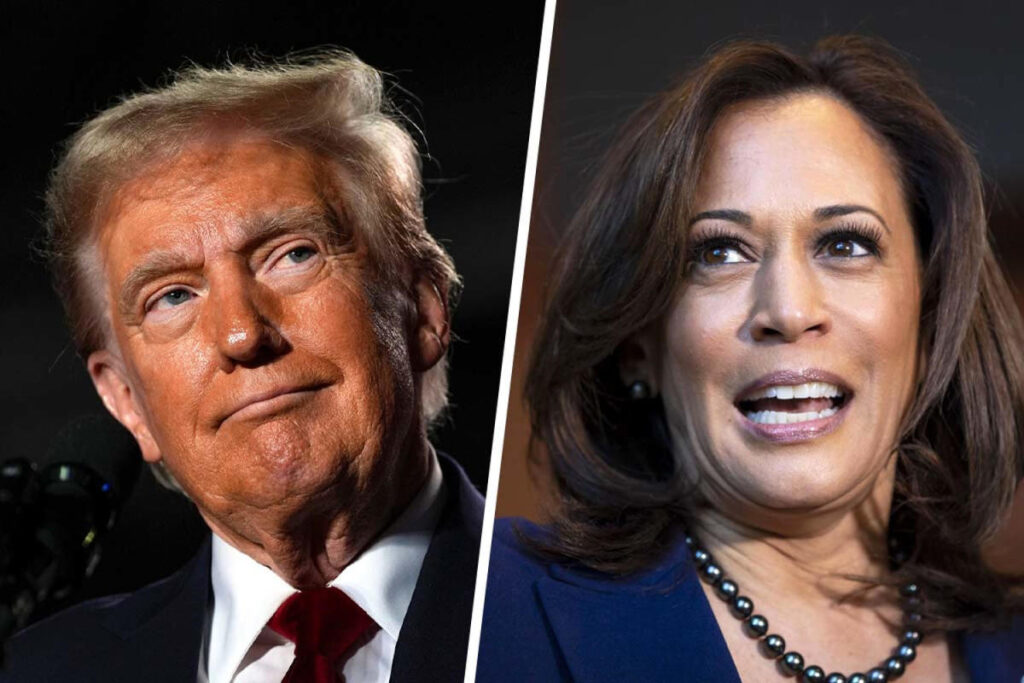During a pivotal stage in the 2024 campaign, Donald Trump and Kamala Harris showcased their distinct campaigning styles during rallies held simultaneously in Milwaukee, a key swing state. Harris maintained a scripted approach during her 24-minute speech at the Wisconsin State Fair Park, emphasizing a message of unity and bipartisanship as she criticized Trump as “increasingly unstable” and fixated on grievances. In contrast, Trump’s nearly 90-minute address at the Fiserv Forum was characteristically spontaneous, mixing traditional campaign themes like immigration with offbeat anecdotes, including a light-hearted discussion about NBA player Giannis Antetokounmpo’s Greek heritage. Trump’s rally reflected his typical blend of confidence and unpredictability, hammering on past administration failures while perpetuating his claims about the 2020 election outcome.
Trump’s speech highlighted his commitment to issues such as immigration control and aggressive foreign policy through tariffs, while he also revisited his long-held allegations that he lost the 2020 election due to widespread fraud, a theme he’s been unable to shake. His tendency to meander into personal anecdotes—like jesting about whether he shares more Greek heritage than Antetokounmpo—served to entertain his supporters, yet clarified his disdain for accountability regarding previous election results. He projected an image of resilience, insisting, “I actually won it twice,” framing his campaign as one that would “turn around” the perceived failures of the current administration.
Harris, on the other hand, positioned herself as a candidate who would engage in constructive dialogue with dissenters, directly opposing Trump’s divisive sentiments. She asserted the value of inclusivity in governance, stating that her approach would prioritize collective community building rather than the adversarial mindset that she attributes to Trump. “Unlike Donald Trump, I don’t believe that people who disagree with me are the enemy. He wants to put them in jail,” she remarked, contrasting her vision for a collaborative government with Trump’s combative reputation. This message resonated particularly with independent voters and disillusioned Republicans, citing her willingness to appoint a Republican Cabinet member as evidence of her commitment to bipartisanship.
The stark contrast between the two candidates extended to their rally atmospheres as well. Trump’s event attracted Republican politicians and well-known figures like Robert F. Kennedy Jr., leading to a robust crowd participation. In juxtaposition, Harris’s rally featured popular musician Cardi B, who emphasized her support for Harris due to the latter’s pragmatic and rational approach, aiming to draw younger voters and those who might be skeptical of mainstream politics. Despite efforts from Trump’s camp to downplay Harris’s celebrity endorsements, the engagement of high-profile figures like Cardi B illustrates the Democrats’ strategy to energize segments of the electorate often disillusioned by conventional politics.
Additionally, Trump’s recent remarks regarding former Republican Rep. Liz Cheney sparked controversy and drew criticism from Democrats, who interpreted his comments as veiled threats of violence. Trump defended his statements, attributing the media’s backlash to misunderstandings, yet his pattern of confrontational rhetoric continues to energize his base. Meanwhile, Cheney’s support for Harris further reinforced the latter’s appeal to moderates and anti-Trump Republicans, highlighting a larger divide within the Republican Party. This division presents an opportunity for Harris to capture voters seeking a viable alternative to Trump’s combative politics.
Incorporating local celebrity endorsements, both candidates recognized the importance of their connection to Wisconsin and its voters. Trump boasted the support of legendary Green Bay Packers quarterback Brett Favre, who has faced scrutiny for his past actions but retains a significant local following. While both candidates strive to appeal to the demographic and political landscape of Wisconsin, the contrasting styles exemplify the broader ideological divide in the country. Trump’s rhetoric seemed aimed at consolidating a base motivated by grievance and nostalgia, whereas Harris sought to present herself as a more unifying and pragmatic leader.
As Wisconsin remains a crucial battleground state in the upcoming election, both candidates are intensely focused on captivating its voters. While specific polls indicate a close race, both camps recognize that engagement and relatability could be key determinations in swaying undecided or independent voters. Trump’s assertion, “We have a country going to hell, but we are going to turn it around very fast,” resonates with a nostalgic desire for a return to past triumphs, while Harris emphasizes hope for community building and consensus, suggesting that the outcome could hinge on voters’ sentiments regarding future direction versus a yearning for past stability. The highly contrasting narratives presented by Trump and Harris paint a vivid picture of the political climate as the election approaches, encapsulating broader debates about governance, accountability, and national identity.

